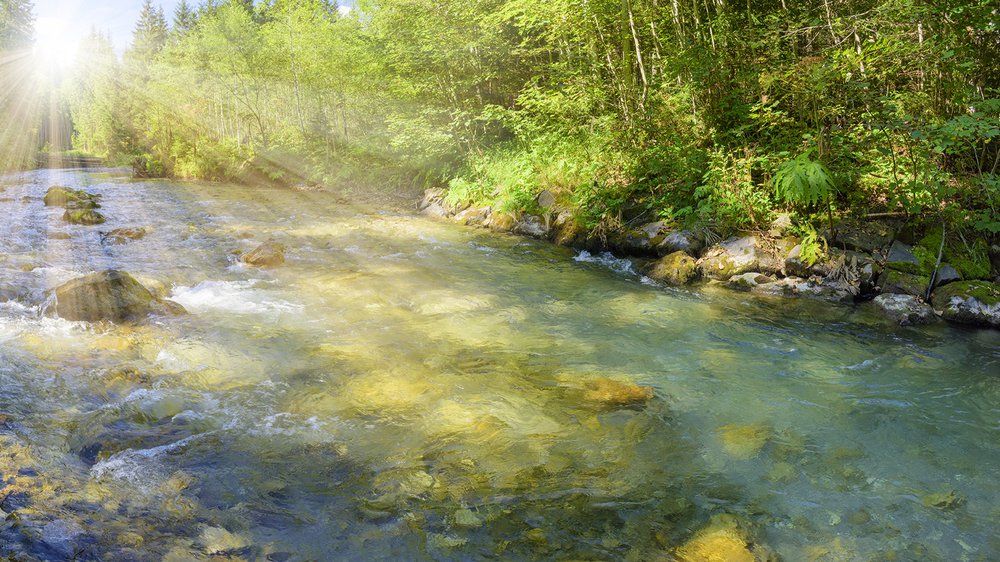Question Your World: How Has Water Quality Gotten Better in the Last 50 Years?
We’ve got some big anniversaries happening this year, folks! For example, 50 years ago in 1972, Doritos introduced its classic Nacho Cheese flavor, changing the world forever. Also, this year we’ll celebrate the 50th anniversary of the Apollo 17 mission, which was the last time humans went to the moon! And it is the 50th celebration of NASA’s Mariner 9 sending back the first detailed photos of now-iconic features on Mars!
Meanwhile back at home and extremely important to us humans in the United States--even more important than Nacho Cheese Doritos, in fact--this year marks the 50th anniversary of the Clean Water Act!
A little back story …
Throughout the 1950s and 1960s, poor water quality plagued the rivers, lakes and other bodies of water throughout our nation. For example, pollution in the Cuyahoga River in Ohio caught on fire in 1969 and there were fish “dead zones” all the way from Akron to Cleveland. These stark images and videos galvanized the nation’s attention, which created a greater public awareness of the issue and added mounting pressure on the government to resolve this dire situation and to provide clean water for all.
In 1972, 50 years ago, the Clean Water Act won bipartisan support in Congress and led to regulations and policy focused at ensuring clean water for residents. The ultimate goal was to have fishable and swimmable waters for all of us. Since then lots of research, planning, dialogue and work has happened to raise the quality of water around the nation.
Here in Virginia we’ve seen some pretty great success stories thanks to the many individuals involved in these important efforts. By enacting new monitoring standards, enforcing wasteload allocations, updating permitting processes and growing general civic awareness, Virginia waterways have seen some great improvements in the last five decades.

Image credit: Getty Images
Perhaps the largest Virginia water story was in the year 2000 when the Chesapeake Bay was put in the spotlight and included in the Clean Water Act work flow. The goal was to remove the Chesapeake Bay from the “dirty waters” list by the year 2025, to ensure that the bay and all of its tidal rivers could maintain a fishable and swimmable status.
At the current pace, the 2025 deadline feels out of reach, highlighting the many variables involved in factoring in our water quality levels. The work ahead not only involves the waters we can see, but the many ways we interact with the watershed far from the shores. Agricultural and industrial run off continue to be significant issues that water quality experts are looking at for future upgrades and conversations here in Virginia.
So, yes, there have been successes, but much work remains! Pollutant discharge, leaked oil and gas from millions of vehicles, various construction developments along our waterways and other stresses still impact water quality throughout the nation.
Don’t forget: clean water matters all the time! We’ve seen how vulnerable our cities and towns are to extreme weather events that can drastically impact water infrastructure, disrupting how people get access to clean water. This similar story has been in the news recently, ranging from places like Mississippi to Puerto Rico. Flint, Michigan, made the news in 2014 for a water crisis as pollutants were causing citizens to get sick just from drinking their tap water. A similar crisis has just unfolded in Jackson, Mississippi.
In 1972, only a third of the nation felt they had access to clean fishable and swimmable water, now 50 years later that number is closer to half the nation. This growth in clean water access shows the Clean Water Act is working, but clearly there’s still more work to be done.
Look folks, if Doritos were able to go from Nacho Cheese to Cooler Ranch in 50 years, then we’ve got a good shot at cleaning up our waters, too! A friendly reminder: it’s all connected. Our decisions truly matter and for us humans, it all comes back to clean water.

